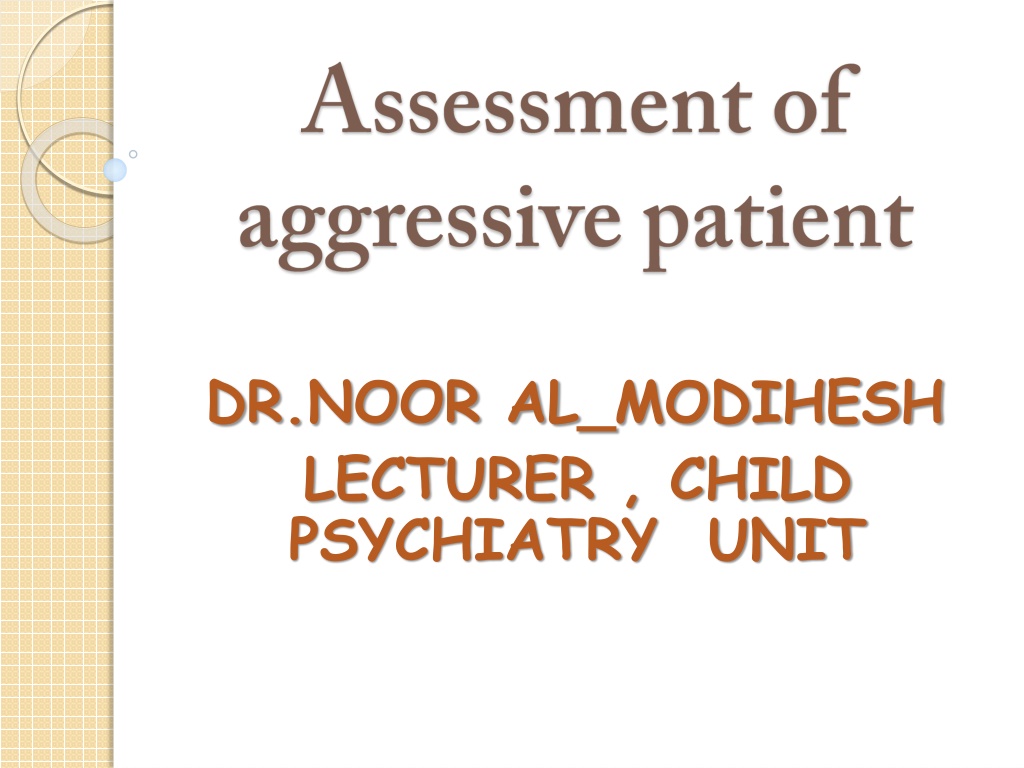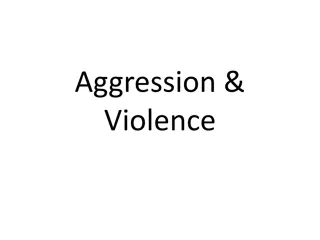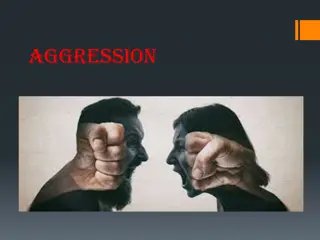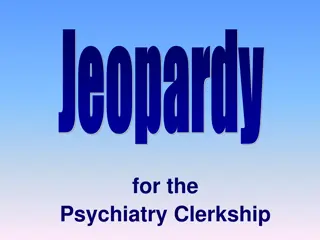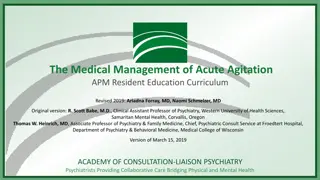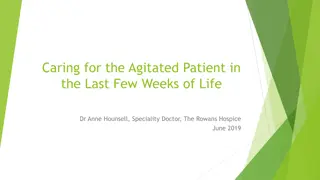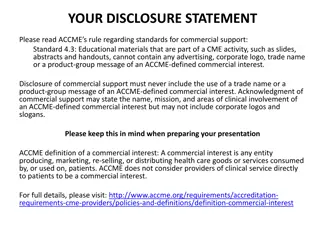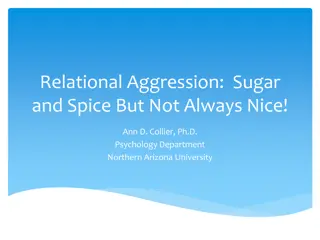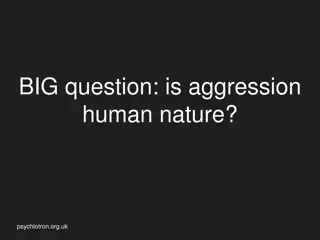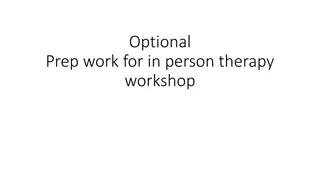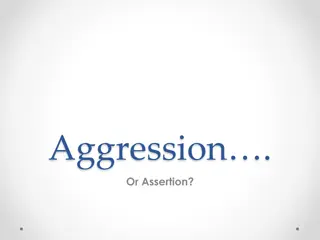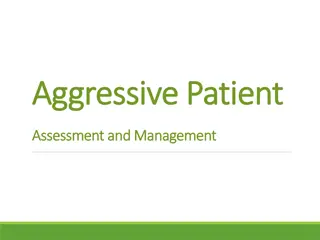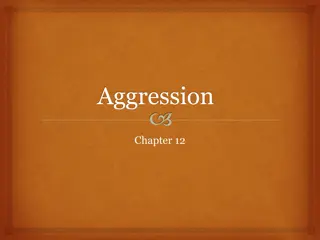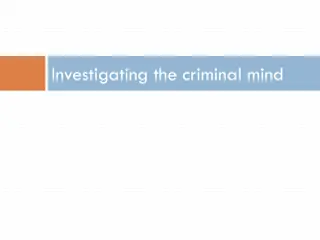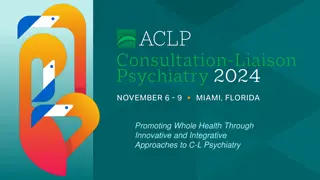Understanding the Difference Between Aggression and Agitation in Psychiatry
Aggression involves verbal or physical attacks, while agitation is a state of mental disturbance leading to physical restlessness and increased arousal. Both can be common presentations in psychiatric emergencies with various risk factors and management strategies involved, including verbal communication to de-escalate violence.
Download Presentation

Please find below an Image/Link to download the presentation.
The content on the website is provided AS IS for your information and personal use only. It may not be sold, licensed, or shared on other websites without obtaining consent from the author. Download presentation by click this link. If you encounter any issues during the download, it is possible that the publisher has removed the file from their server.
E N D
Presentation Transcript
DR.NOOR AL_MODIHESH LECTURER , CHILD PSYCHIATRY UNIT
What is the difference between aggression & agitation?
Aggression: Verbal or physical attack on other living creature or things. Aggressiveness: readiness to be aggressive (Scharfetter,1980)
Agitation: Mental disturbance causing physical restlessness & increased arousal. It is phenomenologically a description of a subjective mood state associated with and resulted in physical expression.
Common presentation to psychiatric emergency. It can be shown with any psychiatric condition , NOT necessary with the illness BUT may be an expression of individual s underlying personality.
Risk factors: History of violence. Significant psychomotor agitation or anger. Hx of impulsive behavior or fantasies of violence. Hx of childhood abuse. Frequently visualizing abuse. Presence of weapons. School failure , truancy.
Cont. Risk factors: Psychiatric disorders: Manic phase. MDD Brief psychotic disorder\ schz. Cognitive dis. ( Delirium\dementia) 1stpsychiatric hospitalization < 18. Substance abuse. Personality dis. MR. Abuse by parents.
Cont. Risk factors: Physical health related issues: Head inj.(frontal & temporal) ictal & post ictal. Demographic data: Male>female. Young>old. Lower socioeconomic status. Few social support.
Management : In ER: Safety is the first consideration ( always stay beside gate) Few people. Avoid confrontation. Take precautions ( armed patients)
Verbal communication can de-escalate the potential for violence & is a logical 1stchoice. Do not bargain with a violent person about the need for restraints, medication or admission
Medication: Antipsychotics ( haloperidol , olanzapine) Can be given orally or parentally. BZD ( lorazepam) Hospitalization: For further assessment. Restraint might be needed.
